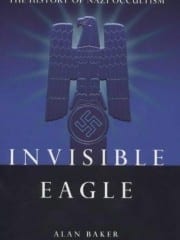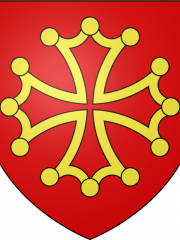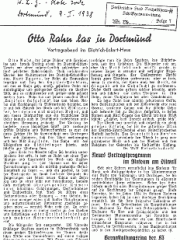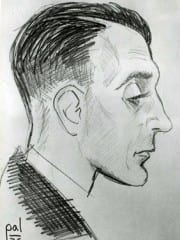Cathars
Holy Grail
Since the publication of The Da Vinci Code the debate rages as to what and where the true Holy Grail exists
Taken as a whole, the various renditions of the Holy Grail legend, whether they derive from Europe or Asia, imply that there are many forms that the Holy Grail can take.
These legends assert that the Holy Grail can be anything from the platter mentioned by Chrétien de Troyes, the first author of the Holy Grail legend, to the Cup of Christ alluded to by Robert de Boron, or even the Stone of Heaven mentioned by Wolfram von Eschenbach in Parzival.
Еhe church's war on the cathars
During the eleventh and twelfth centuries, the region known as the Languedoc, spreading approximately southward from the Loire to the Pyrenees down into Arragon and eastward to the Rhone, became the most highly civilized area of Western Europe. Its fertile soil and pleasant climate provided the means for a leisurely life. The Rhone and the Garonne were notable routes of communication and the passage of many Crusaders on their way to the East gave an immense stimulus to trade. Above all the Moslem conquest of Spain had brought the influence of Arabic culture. The larger cities had schools of medicine, mathematics and astrology where Arabian scholarship was imparted. Jews were not debarred from public life and were highly respected as doctors and teachers. The Catholic Church no longer held the monopoly of knowledge; and were gradually losing their power hold in the Languedoc.
Invisible Eagle and NS Occult History, by Alan Baker
While in Berlin, [Karl Maria] Weisthor worked with the author and historian Otto Rahn (1904-1939), who had a profound interest in medieval Grail legends and the Cathar heresy. In 1933, Rahn published a romantic historical work entitled Kreuzzug gegen den Gral (Crusade Against the Grail), which was a study of the Albigensian Crusade, a war between the Roman Catholic church and the Cathars (or Albigensians), an ascetic religious sect that flourished in southern France in the twelfth and thirteenth centuries. The Cathars believed that the teachings of Christ had been corrupted by the Church -and, indeed, that Christ was exclusively a being of spirit who had never been incarnated in human form.
Otto Rahn and the Quest for the Holy Grail
Otto Rahn (1904-1938), described as a gifted young author and historian, was one of this century's truly fascinating figures. Prior to his mysterious death, at age 35, he wrote two books about the Cathars of southern France: *Kreuzzug gegen den Gral* ("Crusade Against the Grail") and *Luzifers Hofgesinf* ("Lucifer's Court"). Legends continue to surround both his life and tragic death. While his books influenced such authors as Trevor Ravenscroft and Jean-Michel Angebert, they were never translated into English. In the 1982 best selling book *Holy Blood, Holy Grail*, Otto Rahn's name appears in a small but intriguing footnote. Otto Rahn believed that he had found the location of the Holy Grail Mountain, the Montsalvat of legend, in the Cathar mountain fortress of Montsegur in the French Pyrenees. He was, says Prof. Joscelyn Godwin, "largely responsible for the mythological complex that associated the Cathars and Montsegur with the Holy Grail and its Castle."
Norma Lorre Goodrich in her own highly acclaimed work *The Holy Grail* pays tribute to Otto Rahn's "Crusade Against the Grail" describing it as "a wonderful book, a monument to this German idealist author, who died mysteriously during a descent in the Alps."
Newspaper coverage of a speech by Otto Rahn
(Westfalia Landeszeitung, January 9, 1938)
Otto Rahn Reads in Dortmund Evening Lecture at the Dietrich Eckart Haus
Otto Rahn, the young poet and researcher read and lectured Friday evening at the Dietrich Eckart Verein (club) in front of a rather large and very captivated audience. After a few introductory words by the person in charge of cultural events for the Dietrich Eckart Verein, Kurt Eggers, who greeted Rahn as a comrade and briefly outlined the Lucifer-Problem which Rahn would talk about. Next Rahn created an image of Lucifer in such emphatic and compelling language that it could not be thought out in a more moving and explicit manner. Rahn read from his newest work, "Luzifers Hofgesind" (Lucifer's Court Servants), which tells about his travels and findings in Southern France where he followed the traces of the Grail and the Albigenses (Cathars), the pure and true heretics, and from new viewpoints, he drew a prolific picture of this anti-Roman movement which also spread in Germany at that time. The lecture covered difficult material and required extreme discipline and alertness. It was a good sign for the symbioses of lecturer and audience that no word was lost and that the image of Lucifer, which Rahn celebrated with the Albigenses as the Bringer of Light, was most effective.
Otto Rahn in Jones' Celtic Encyclopedia
b. February 18, 1904; Michelstadt, Germany.
d. March 13, 1939; Tyrolean Mts.
Poet, mystic, and Nazi researcher. Rahn was obsessed with two ideas--the Holy Grail and the Cathars, medieval French heretics; while in college, he had intended to write a dissertation on the hypothetical Kyot, the supposed troubador who gave Wolfram von Eschenbach the story of Parzival.
In 1929, he made a special trip to the Languedoc region of Southern France, a hotbed of Catharist activities in the thirteenth century. He began excavating at Montsegur, the last Cathar stronghold to fall to the Inquisition. Legend had it that the Cathars had a great treasure which was never found, but hidden deep in the mountainside. Rahn was convinced that this treasure was the Holy Grail, and he intended to find it.
Raiders of the Lost Grail
Berlin between the wars was a city known throughout Europe for its bohemian subculture of young intellectuals. Amongst the personalities who hotly debated the many modernist “isms” that were fracturing the old ideological certainties which had glued together the 19th century, few individuals were more colourful than a dark-haired, green-eyed young man named Otto Wilhelm Rahn. His gaunt figure, swathed in characteristic black coat and fedora, casts a long shadow out of those twilight years, a ‘great silhouette’ around which the most extravagant myths accrued. He was variously said to be a Mason, a Rosicrucian, a Luciferian, an agent of the Thule Gesellschaft, an initiated Cathar and even the leader of an obscure, international secret society. As author Philip Kerr puts it, Rahn’s contemporaries might not have been surprised to see “the Scarlet Woman and the Great Beast come flying out of the front door” of his apartment on Tiergartenstrasse. One of his Nazi peers in Heinrich Himmler’s Black Order remarked in an internal memo that he “half suspected Rahn of being in league with the little people”. To this day, it is widely believed that this enigmatic young man knew the whereabouts of one of the most sacred relics in all Christendom – the Most High Holy Grail. But the truth is stranger still…








Neueste Kommentare
vor 13 Jahre 41 Wochen
vor 13 Jahre 42 Wochen
vor 13 Jahre 42 Wochen
vor 13 Jahre 42 Wochen
vor 13 Jahre 45 Wochen
vor 13 Jahre 51 Wochen